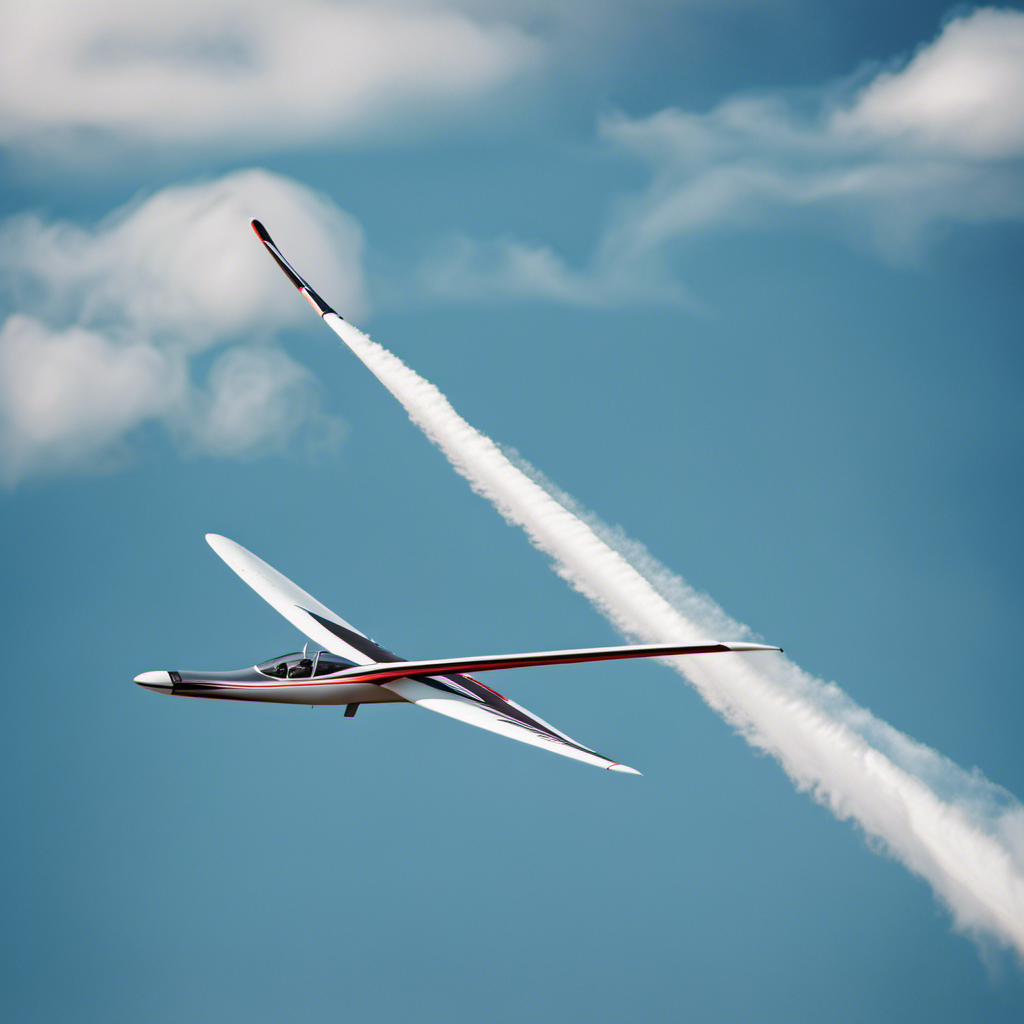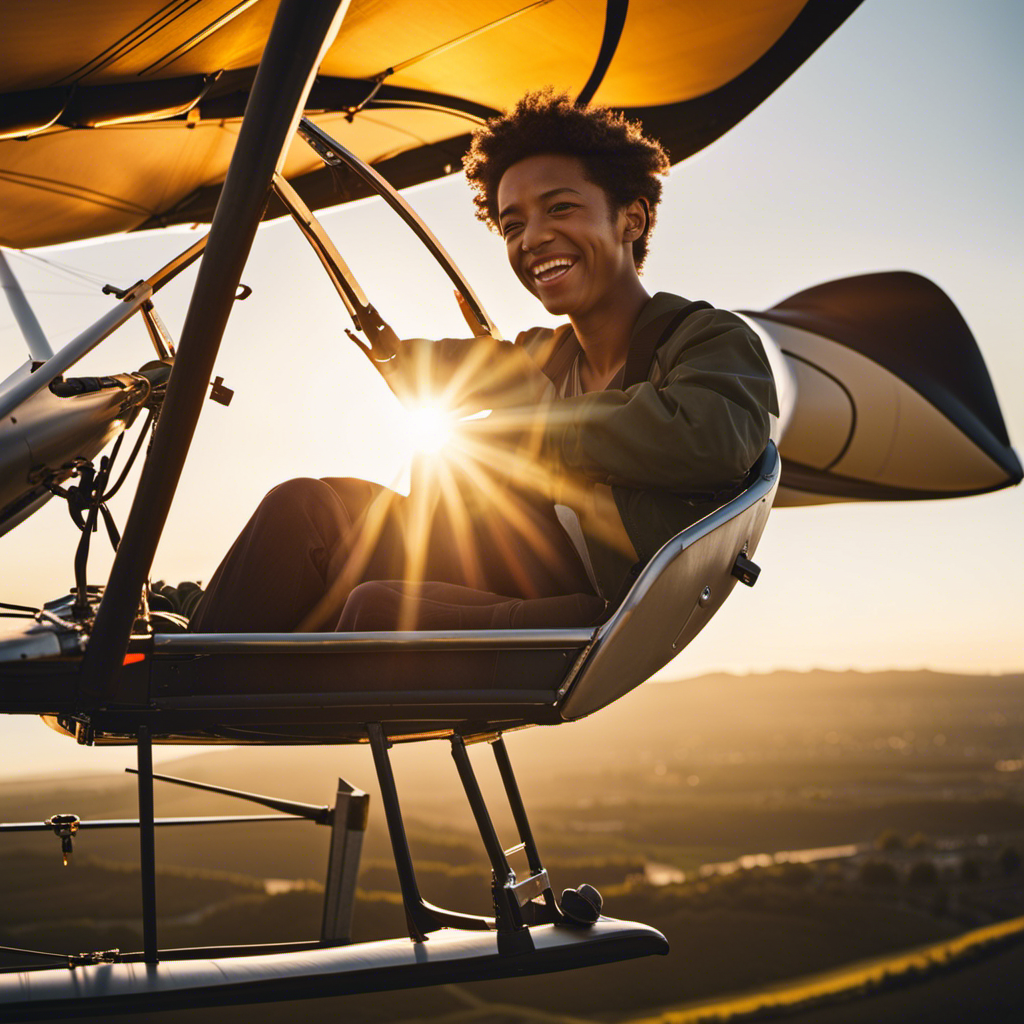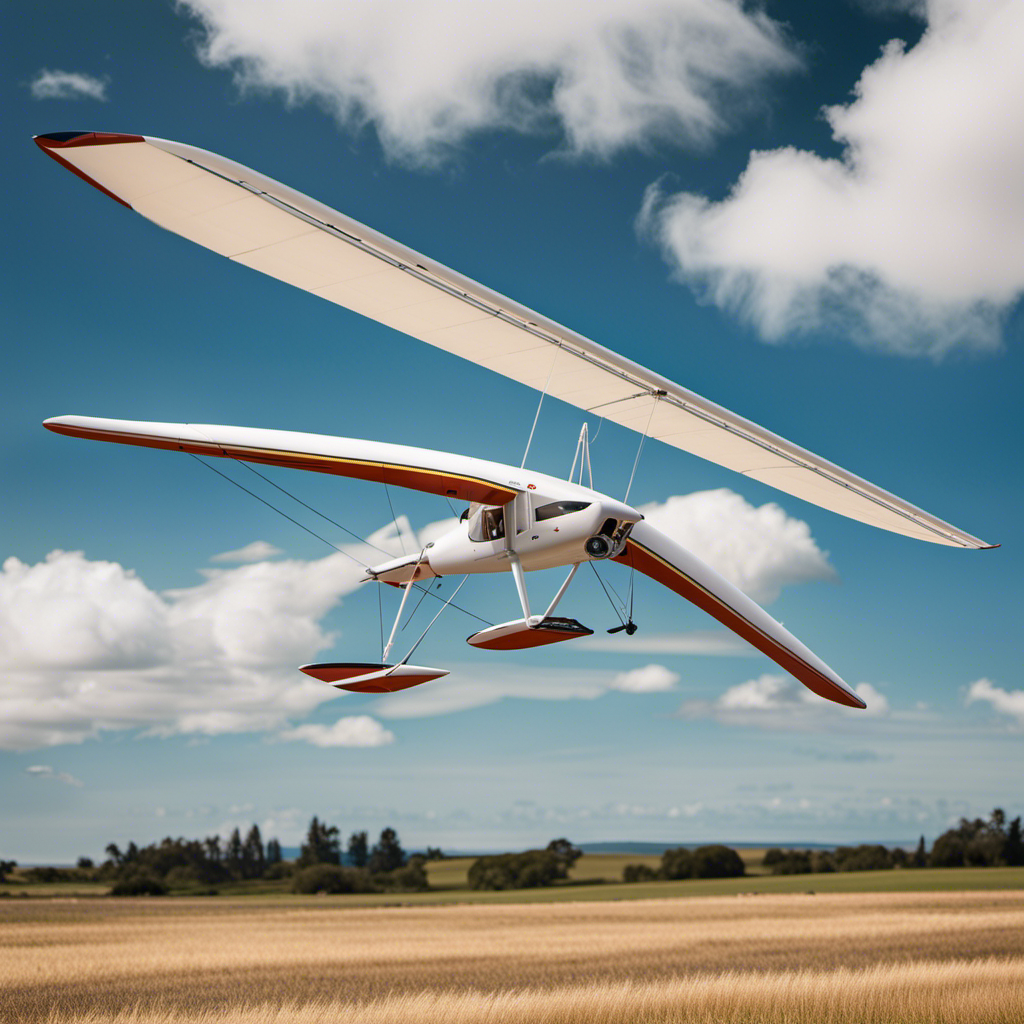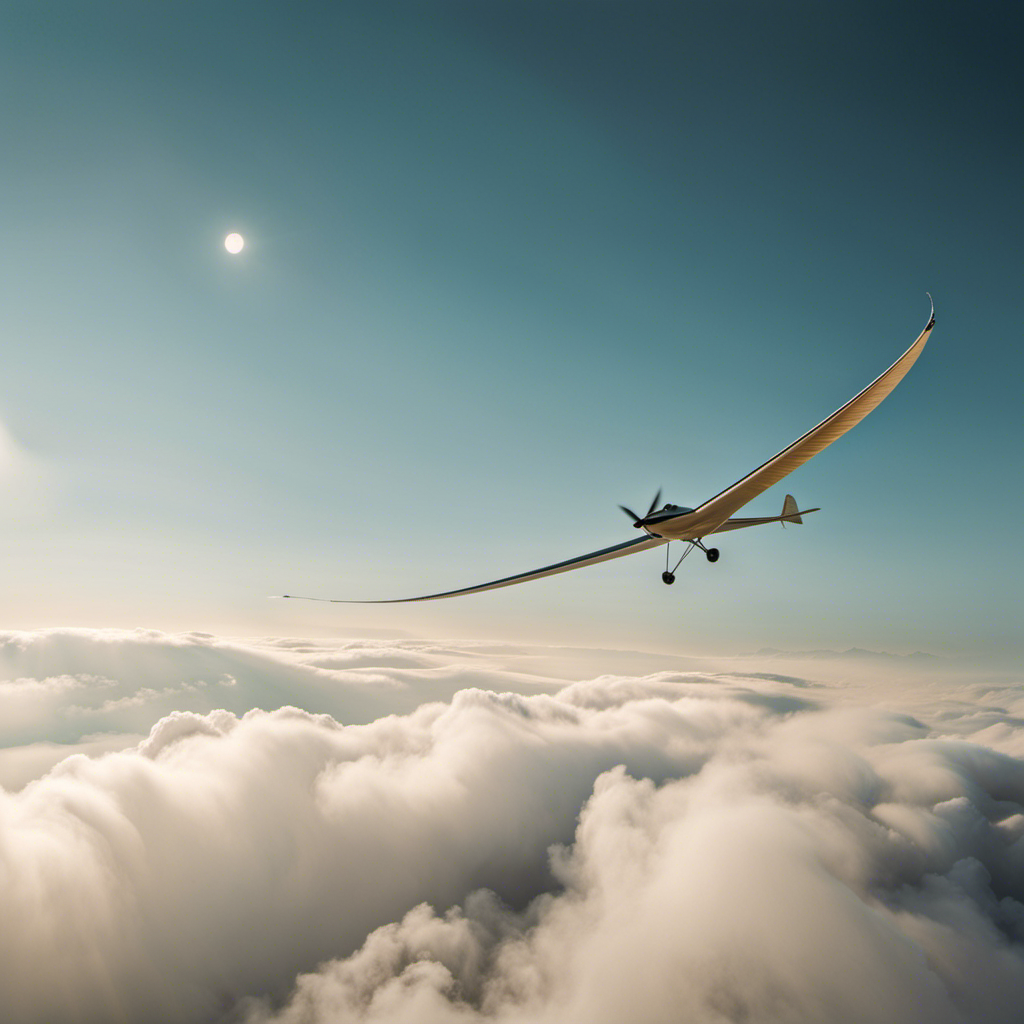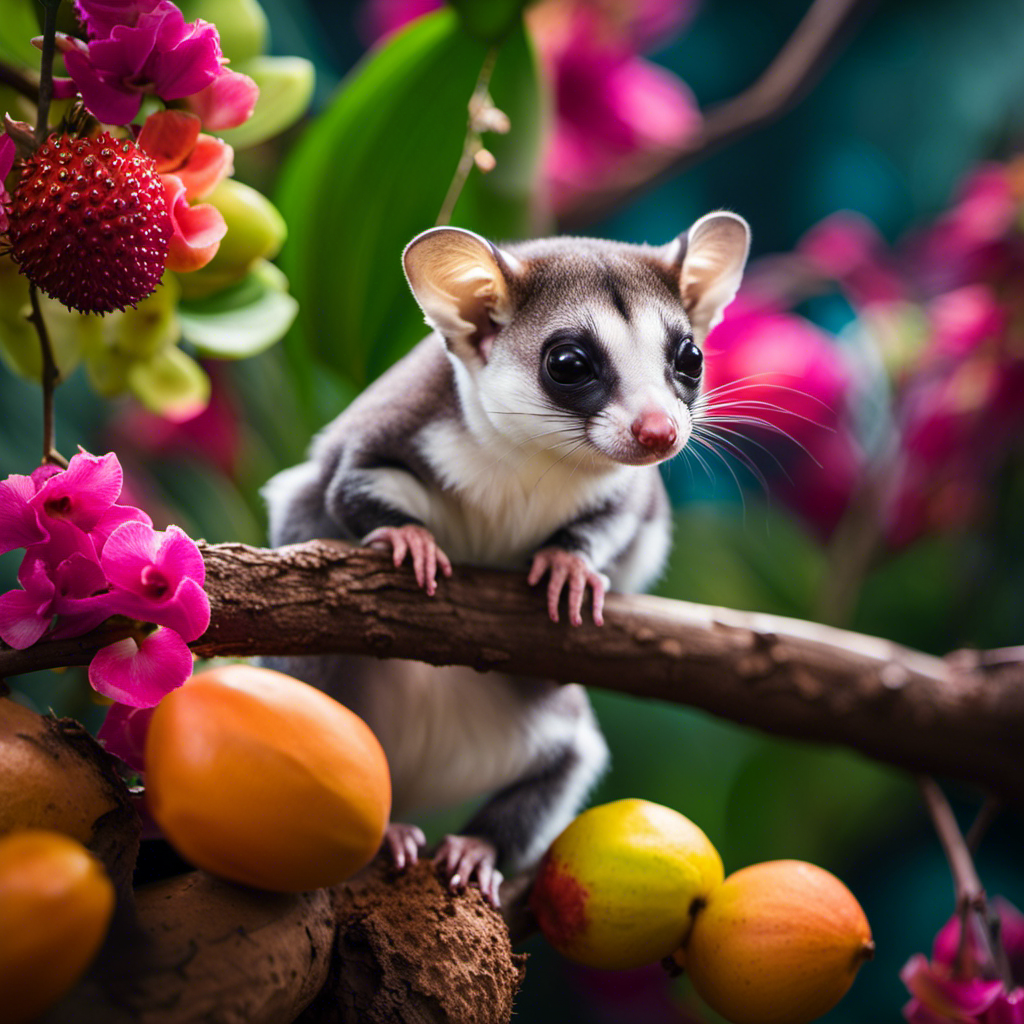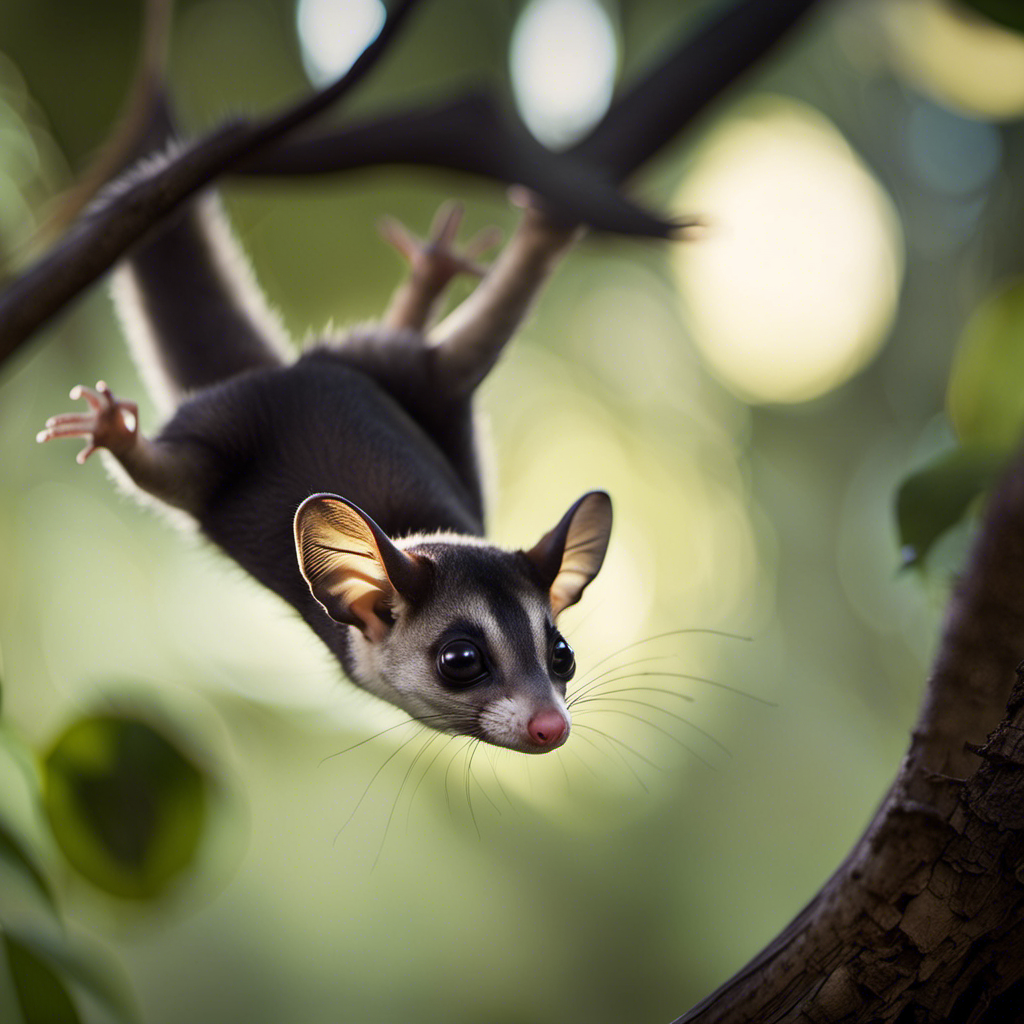When I first entered the world of aviation, I was captivated by the thrill of soaring through the sky. It was during this journey that I discovered the fascinating differences between gliders and sailplanes. Fly high and learn more about these exciting aircrafts!
While many may use these terms interchangeably, understanding the nuances can greatly impact your flying experience. In this article, we will dive into the history, characteristics, flight capabilities, and safety considerations of both gliders and sailplanes.
So fasten your seatbelts and join me as we unravel the secrets of these magnificent flying machines.
Key Takeaways
- Gliders and sailplanes have a rich history and have played a crucial role in shaping aviation.
- Gliders are aircraft designed to fly without an engine, relying on natural forces for lift and forward motion.
- Sailplanes have long and slender wings, lightweight materials, and advanced control systems, allowing for extended soaring flights.
- Gliders and sailplanes have impressive flight capabilities, including long-distance travel, high speeds, and aerobatic maneuvers.
History and Origins of Gliders and Sailplanes
You might be interested to know that the history and origins of gliders and sailplanes date back to the late 19th century. Gliders, also known as sailplanes, have a rich history that spans over a century of innovation and development.
The evolution of sailplanes can be traced back to the early experiments of aviation pioneers such as Otto Lilienthal and the Wright brothers. In the late 19th century, Lilienthal made significant contributions to the history of gliders by designing and flying a series of successful glider models. His research and experiments laid the foundation for future advancements in glider technology.
The Wright brothers, on the other hand, took the concept of gliders to new heights with their groundbreaking powered flights in the early 20th century. Over time, the design and capabilities of gliders evolved. Advancements in materials, aerodynamics, and engineering techniques led to the development of modern sailplanes.
These sophisticated aircraft are specifically designed for extended soaring flights, using updrafts and thermals to stay airborne for long durations. In conclusion, the history of gliders and the evolution of sailplanes have played a crucial role in shaping the world of aviation. From the early experiments of Lilienthal to the modern sailplanes of today, these aircraft have come a long way.
In the subsequent section, we will explore the definition and characteristics of gliders, delving deeper into their unique features and capabilities.
Definition and Characteristics of Gliders
The definition and characteristics of gliders can be understood by knowing their unique features and capabilities. Gliders, also known as sailplanes, are aircraft designed to fly without an engine. They rely on the natural forces of the atmosphere to stay airborne and achieve forward motion. Glider design is focused on maximizing lift and minimizing drag, allowing them to soar through the air for extended periods of time. To better understand the key features and capabilities of gliders, let’s take a look at the following table:
| Feature | Description |
|---|---|
| Wingspan | Usually long and slender to maximize lift and reduce drag |
| Wing Design | Often features high aspect ratio and airfoils optimized for soaring |
| Cockpit | Typically accommodates one or two occupants |
| Controls | Consist of ailerons, elevator, and rudder for maneuverability and control |
| Soaring Techniques | Gliders use various techniques like ridge soaring, thermal soaring, and wave soaring for lift |
Understanding the design and capabilities of gliders sets the foundation for comprehending the definition and characteristics of sailplanes. By building upon this knowledge, we can explore the unique features and abilities of sailplanes without the need for explicit transitions.
Definition and Characteristics of Sailplanes
When flying a sailplane, you’ll notice that its wingspan is typically long and slender, maximizing lift and reducing drag. This design is crucial for sailplane construction as it allows for efficient soaring and sustained flight without the need for an engine.
Sailplanes are built with lightweight materials such as carbon fiber and fiberglass, ensuring strength and flexibility while keeping the overall weight low. The wings are meticulously designed with airfoils that generate a significant amount of lift, allowing the sailplane to stay aloft for extended periods. Additionally, the wings are often equipped with flaps and spoilers, providing the pilot with increased control over the sailplane’s performance capabilities.
Sailplanes are known for their impressive performance capabilities. With their efficient wing design and high aspect ratio, sailplanes can achieve remarkable gliding ratios. This means that for every unit of altitude lost, the sailplane can travel a significant distance horizontally. Furthermore, sailplanes can soar in thermals, ridge lift, and even wave lift, taking advantage of natural atmospheric phenomena to gain altitude and extend their flight time. The combination of a sleek fuselage, slender wings, and advanced control systems allows sailplanes to reach impressive speeds and perform aerobatic maneuvers with precision.
Transitioning into the subsequent section about ‘variations in design and structure,’ it is fascinating to explore the different ways sailplanes have been optimized for specific purposes and competitions.
Variations in Design and Structure
When it comes to wing configurations and shapes in sailplanes, there are several variations to consider. These variations can have a significant impact on the performance and handling characteristics of the aircraft.
Additionally, the design and materials used in the fuselage of a sailplane play a crucial role in its overall performance and structural integrity. Different combinations of materials and design choices can affect factors such as weight, strength, and aerodynamics.
Wing configurations and shapes
Wing configurations and shapes can greatly impact the performance of gliders and sailplanes. The design choices made in this area can significantly influence the wing loading and aerodynamic efficiency of these aircraft. When considering wing configurations, there are several factors to take into account:
-
Aspect ratio: This refers to the ratio of the wing’s span to its average chord. Higher aspect ratios result in reduced induced drag and improved efficiency.
-
Wing planform: The shape of the wing, such as straight, swept, or tapered, affects the distribution of lift and drag across the wing.
-
Winglets: These small vertical extensions at the wingtips reduce the formation of vortices, improving aerodynamic efficiency.
Understanding these design elements allows for the optimization of wing performance in gliders and sailplanes.
Moving forward into the discussion of fuselage design and materials, it is important to consider how these factors interact with the overall aircraft performance.
Fuselage design and materials
The choice of fuselage design and materials greatly impacts the overall performance of gliders and sailplanes.
In terms of fuselage construction, gliders and sailplanes typically employ lightweight materials such as carbon fiber composites or fiberglass. These materials offer high strength-to-weight ratios, ensuring structural integrity while keeping the overall weight low.
The fuselage design is also crucial, as it affects the aerodynamics and stability of the aircraft. Gliders often have sleek, streamlined fuselages to minimize drag, while sailplanes may have a more spacious and comfortable cockpit design to accommodate longer flights.
Additionally, the positioning of the cockpit in relation to the wings and tail plays a role in the overall balance and handling characteristics of the aircraft.
As we delve into the flight capabilities and performance, these features will further highlight the distinctions between gliders and sailplanes.
Flight Capabilities and Performance
Glider pilots have the advantage of being able to soar in thermals for extended periods. This ability is due to the flight performance and aerodynamic characteristics of gliders. Gliders are designed to have high lift-to-drag ratios, allowing them to maintain altitude and glide efficiently. The aerodynamic design of a glider includes features such as long, sleek wings and a streamlined fuselage, which minimize drag and enhance performance.
To better understand the flight capabilities and performance of gliders, let’s take a look at the following table:
| Flight Characteristic | Description | Importance |
|---|---|---|
| Lift-to-Drag Ratio | High ratio indicates | Efficient gliding, ability to stay airborne for longer periods |
| efficient gliding | ||
| Glide Ratio | Ratio of horizontal distance | Ability to cover long distances without an engine |
| to vertical descent | ||
| Sink Rate | Rate of descent without | Ability to find and utilize thermals for sustained flight |
| thermals | ||
| Stall Speed | Minimum speed at which | Safety during takeoff and landing |
| the glider can maintain lift |
By analyzing these flight characteristics, it becomes clear that gliders are optimized for soaring and gliding. This knowledge is essential for pilots, as they need to understand the aerodynamics and performance limitations of their gliders to ensure safe and efficient flights.
Understanding the flight capabilities and performance of gliders is just one aspect of becoming a skilled pilot. To gain the necessary expertise, pilots must undergo extensive training and meet specific licensing requirements. By acquiring the necessary skills and knowledge, pilots can fully harness the potential of gliders and enjoy the freedom of soaring through the skies without an engine.
Training and Licensing Requirements
When it comes to pilot training for gliders and sailplanes, there are several key differences to consider.
Firstly, while both types of aircraft require a certain level of skill and knowledge, the training for gliders tends to be more focused on thermalling and soaring techniques, whereas sailplanes emphasize advanced aerodynamics and cross-country flying.
Secondly, licensing regulations and certifications also differ between the two. Glider pilots typically obtain a private pilot license with a glider rating, while sailplane pilots often pursue additional certifications such as the commercial pilot license or even the flight instructor certificate.
Differences in pilot training for gliders and sailplanes
Pilots need to undergo different training for gliders and sailplanes. When it comes to pilot qualifications, both gliders and sailplanes require a private pilot license. However, additional training and endorsements are needed for each type of aircraft.
Glider pilots must acquire a specific glider rating, which involves learning how to control the aircraft’s flight without an engine. This training includes practicing flight maneuvers such as thermalling, ridge soaring, and spot landings.
On the other hand, sailplane pilots undergo training that focuses on handling high-performance sailplanes, which can reach faster speeds and perform more advanced maneuvers. Transitioning between the two types of aircraft may require additional training to ensure proficiency.
Understanding these differences in pilot training is crucial for aspiring pilots to become skilled in both gliders and sailplanes. As we delve into licensing regulations and certifications, we will explore the next step in the journey towards becoming a proficient pilot.
Licensing regulations and certifications
To obtain the necessary licenses and certifications, you must meet the requirements set forth by aviation authorities. Licensing requirements for gliders and sailplanes are similar in many ways, with some minor differences.
In order to qualify for a glider pilot license, you must be at least 16 years old, pass a medical examination, and complete a minimum of 40 hours of flight training, including 10 hours of solo flight time.
For a sailplane pilot license, the requirements are slightly more stringent. You must be at least 17 years old, pass a medical examination, and complete a minimum of 60 hours of flight training, including 20 hours of solo flight time.
Both licenses also require passing a written exam and a practical flight test. These qualifications ensure that pilots have the necessary skills and knowledge to safely operate gliders and sailplanes.
Moving into the next section, let’s explore the popular uses and activities associated with these aircraft.
Popular Uses and Activities
When it comes to glider competitions and aerobatics, the thrill of pushing the limits of the aircraft’s maneuverability and showcasing one’s skills is unparalleled.
These competitions, often held in designated aerobatic boxes, require pilots to perform a series of predetermined maneuvers such as loops, rolls, and spins with precision and control.
On the other hand, sailplane cross-country flights and record-breaking attempts involve navigating long distances using thermal lift and other atmospheric conditions to stay aloft for extended periods and cover impressive distances, often surpassing hundreds of kilometers.
These endeavors require careful planning, strategic decision-making, and a deep understanding of meteorology to optimize the flight path and achieve maximum performance.
Glider competitions and aerobatics
Glider competitions can be thrilling to watch, with pilots showcasing their skills and maneuvering through the air with precision. In glider aerobatics, pilots perform a series of challenging maneuvers such as loops, rolls, and spins, pushing the limits of their aircraft.
These competitions often follow specific formats, such as freestyle, where pilots have the freedom to create their own routines, and known sequences, where pilots must execute predetermined maneuvers. Judged on precision, technique, and difficulty, the pilots aim to impress both the judges and the spectators with their mastery of flight.
As the excitement builds during these competitions, it becomes evident how these skilled pilots are able to push the boundaries of glider flight.
Moving on to sailplane cross-country flights and record-breaking attempts, pilots embark on long-distance journeys, exploring the vast skies in search of new horizons.
Sailplane cross-country flights and record-breaking attempts
Sailplane pilots are constantly pushing the limits of their aircraft during record-breaking attempts and cross-country flights. These endurance flights require meticulous planning and skillful execution. As I soar through the sky, striving to break sailplane world records, I am enveloped in a world of excitement and determination.
The following elements paint a vivid picture of the experience:
- The rush of adrenaline as I navigate thermals, searching for pockets of rising air.
- The breathtaking views of sprawling landscapes and distant horizons.
- The quiet serenity of gliding through the air, with only the sound of wind rushing past.
- The precision required to optimize speed and efficiency, using every ounce of lift.
- The sense of accomplishment when surpassing previous records, pushing the boundaries of what is possible.
But amidst the thrill and adventure, safety considerations and regulations loom in the background, ensuring that these incredible feats are achieved within well-defined boundaries.
Safety Considerations and Regulations
One of the main safety considerations for pilots is ensuring they are familiar with the regulations. Pilot qualifications and aircraft maintenance are crucial aspects of ensuring a safe flying experience.
Pilots must meet specific qualifications and certifications to operate gliders and sailplanes. These qualifications include obtaining a glider pilot license, which requires a certain amount of flight hours and passing written and practical exams. Additionally, pilots must undergo regular medical examinations to ensure they are physically fit to fly.
Aircraft maintenance is another vital aspect of safety in glider and sailplane operations. Regular inspections and maintenance checks are required to ensure that the aircraft is in optimal condition. This includes checking the integrity of the airframe, control surfaces, and ensuring that all systems, such as the electrical and hydraulic systems, are functioning correctly. Any necessary repairs or replacements must be promptly addressed to maintain the airworthiness of the aircraft.
Transitioning into advancements and innovations in glider and sailplane technology, it is important to note that these safety considerations have led to significant advancements in aircraft design and technology. These advancements have resulted in safer and more efficient gliders and sailplanes, with improved performance, handling characteristics, and safety features.
Advancements and Innovations in Glider and Sailplane Technology
When it comes to advancements and innovations in glider and sailplane technology, you’ll be impressed by the improved performance and safety features. Over the years, manufacturers have made significant progress in enhancing these aircraft, both in terms of materials and construction techniques. Let’s take a closer look at some of the notable advancements in glider and sailplane technology.
| Advancements | Materials | Construction |
|---|---|---|
| 1. Wing Design | The use of advanced composite materials, such as carbon fiber, has allowed for lighter and stronger wings, resulting in improved performance and maneuverability. | Incorporating winglets and wingtip devices has become common practice to reduce drag and increase efficiency. |
| 2. Cockpit Technology | The introduction of glass cockpits, featuring digital displays and advanced avionics, has revolutionized the way pilots interact with their aircraft. | These modern cockpits provide pilots with real-time information, including weather updates, navigation aids, and flight performance parameters. |
| 3. Safety Systems | Advancements in safety systems, such as parachute recovery systems and improved crashworthiness, have significantly enhanced the overall safety of gliders and sailplanes. | By utilizing innovative materials and designs, manufacturers have minimized the risk of injury in the event of a crash. |
These advancements in glider and sailplane technology have opened up new possibilities for pilots, making these aircraft more versatile and reliable. When choosing the right aircraft for your needs, it is essential to consider these advancements and how they align with your flying goals and preferences.
Choosing the Right Aircraft for Your Needs
When selecting a glider or sailplane, there are several factors that need to be considered.
First, you need to determine your flying goals and objectives, as this will influence the type of aircraft that is suitable for your needs.
Additionally, factors such as performance capabilities, safety features, and maintenance requirements should also be taken into account.
Once you have chosen your aircraft, it is important to find the right training and support resources to ensure you have the necessary skills and knowledge to operate your chosen aircraft safely and efficiently.
This can include finding a reputable flight school or instructor, accessing training materials and resources, and joining a community or organization that provides ongoing support and guidance.
Factors to consider when selecting a glider or sailplane
Before deciding on a glider or sailplane, you should take into account several factors. Pricing considerations and maintenance requirements are two important aspects to consider when selecting the right aircraft for your needs. Gliders typically have a lower initial cost compared to sailplanes, making them more accessible for beginners. However, they may require more frequent maintenance and repairs due to their simpler design. On the other hand, sailplanes often have a higher upfront cost but require less maintenance in the long run. To help you understand these differences better, here is a table highlighting the pricing considerations and maintenance requirements for gliders and sailplanes:
| Factors | Gliders | Sailplanes |
|---|---|---|
| Initial Cost | Lower | Higher |
| Maintenance | More frequent | Less frequent |
| Repairs | More frequent | Less frequent |
Considering these factors will help you make an informed decision when choosing between a glider and a sailplane. Now, let’s explore how to find the right training and support resources for your chosen aircraft.
Finding the right training and support resources for your chosen aircraft
After considering the various factors involved in selecting a glider or sailplane, it is crucial to find the right training and support resources for your chosen aircraft.
As a pilot, being part of the pilot community is essential for gaining access to valuable knowledge and insights. This community can provide guidance on finding reputable training programs that specialize in gliders or sailplanes. Proper training is crucial to ensure safe and efficient operation of these aircraft.
Additionally, maintenance and repairs are inevitable aspects of aircraft ownership. Being part of the pilot community can help you connect with experienced mechanics and technicians who specialize in gliders or sailplanes. They can provide guidance on regular maintenance procedures and help troubleshoot any issues that may arise.
Frequently Asked Questions
Can gliders and sailplanes be used for transportation or are they strictly recreational aircraft?
Glider vs sailplane: Understanding the differences, gliders and sailplanes can be used for transportation and have commercial applications. They possess transportation capabilities and can be utilized for various purposes beyond recreational activities.
Are there any age restrictions for flying gliders or sailplanes?
Age restrictions for flying gliders or sailplanes vary by country, but generally, pilots must be at least 14 years old. Safety regulations differ as well, with strict guidelines on training, maintenance, and airspace usage to ensure safe operation.
What are the typical costs associated with owning and operating a glider or sailplane?
The cost of owning and operating a glider or sailplane includes expenses for maintenance and glider lessons. Glider maintenance involves regular inspections, repairs, and replacements. The cost of glider lessons varies depending on the instructor and location.
Are there any limitations on where gliders and sailplanes can fly?
There are limitations and airspace restrictions for both gliders and sailplanes. They are not allowed to fly in certain restricted areas, such as military airspaces, and must adhere to specific altitude limits and flight paths designated by aviation authorities.
How do weather conditions affect the performance of gliders and sailplanes?
Weather conditions impact gliders and sailplanes. Thermals, wind patterns, and air density affect their performance and flight duration. Thermals provide lift, wind patterns can assist or hinder, and air density affects the efficiency of the wings.
Conclusion
In conclusion, after delving into the history, characteristics, and flight capabilities of gliders and sailplanes, it is clear that these aircraft have distinct differences.
Gliders, with their simple design and reliance on natural forces, offer a serene and contemplative flying experience.
On the other hand, sailplanes, with their advanced technology and aerodynamic features, provide a more exhilarating and performance-driven flight.
While both aircraft serve various purposes and activities, it is important to consider the specific needs and preferences before choosing the right aircraft.
Ultimately, the truth remains that gliders and sailplanes offer unique and rewarding experiences in the world of aviation.
With a heart that soars as high as the skies, Aria, affectionately known as “Skylark,” is the driving force behind Soaring Skyways. Her journey into the gliding world began as a young dreamer gazing up at the soaring birds, yearning to experience the weightlessness and freedom they embodied. With years of experience both in the cockpit and behind the scenes, Aria’s commitment to the gliding community is unwavering.
